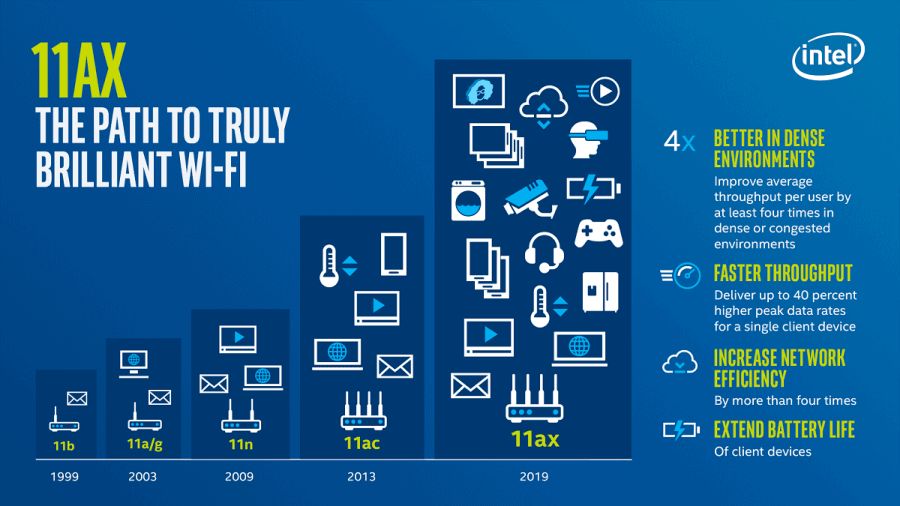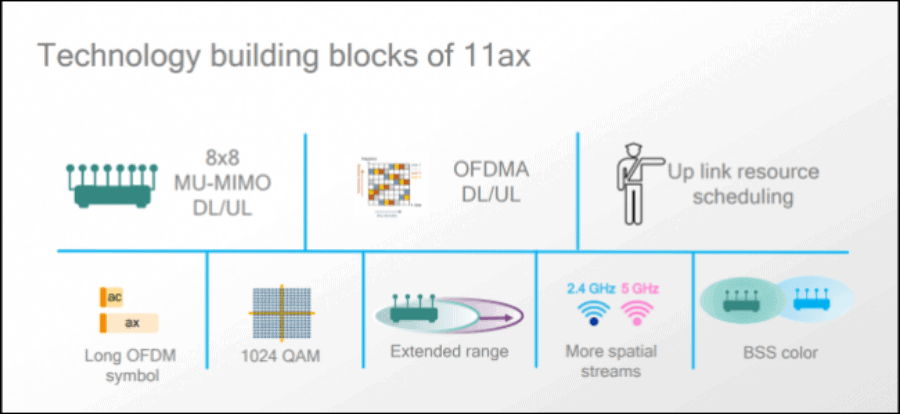In previous publication we mentioned the Wi-Fi 6, the next-generation wireless standard that is faster than 802.11ac. But besides speed, it will provide better performance in congested areas, from fields to your home. We will see 2019.
Wi-Fi as we mentioned yesterday has version numbers! Even old Wi-Fi names like "802.11ac" have been renamed user-friendly names like "Wi-Fi 5."
Below are the versions of Wi-Fi:
Wi-Fi 4 is 802.11n, which was released in 2009.
WiNet 5 is 802.11ac, which was released in 2014.
Wi-Fi 6 is the new edition, also known as 802.11ax. It will be released in 2019.
However, older versions of Wi-Fi that are not widely used have also been named:
WiNet 1 is 802.11b, which was released in 1999.
WiNet 2 is 802.11a, which also released 1999.
Wi-Fi 3 is 802.11g, which was released in 2003.
Fastest Wi-Fi
As usual, the latest Wi-Fi standard offers faster transfer speeds data. If you use a Wi-Fi router with a single device, the maximum speed should be up to 40% higher with Wi-Fi 6 compared to the previous Wi-Fi 5.
Wi-Fi 6 is faster due to more efficient data encoding, resulting in much higher performance. More data is compressed on the same radio waves. The chips encoding and decoding these signals continue to become stronger and can handle larger amounts of data.
The new standard increases speeds even on 2.4GHz networks. Although the industry prefers Wi-Fi at 5GHz for less interference, 2,4GHz is even better at penetrating solid objects.
Longer battery life
A new target wake time (TWT) feature helps your Wi-Fi-enabled smartphones or computers have longer battery life.
When the router "talks" to a device (like your smartphone), it can tell the device exactly when to put the Wi-Fi to sleep and when to wake up to receive the next transmission. This will save energy on the devices, because the Wi-Fi will get more time in standby mode. This of course means longer life on your battery.
Better performance in crowded areas
Wi-Fi does not give a good signal when you are in a busy area with many devices that use it. Imagine a busy stadium, an airport, a hotel, a shopping mall. Maybe your connection is very slow.
The new Wi-Fi 6, also known as 802.11ax, will bring many new technologies to help with this problem. Intel says Wi-Fi 6 will improve the average speed per user by "at least four times" in congested areas of the network.
This is not only true for busy public places but also for your home if you have many devices connected to Wi-Fi.
Why Wi-Fi 6 is better at congestion
Though you do not need to know the details, a Wi-Fi 6 hotspot with a Wi-Fi 6 device will work best. Let's see why:
Wi-Fi 6 can split a wireless channel into many subchannels. Each of these subchannels can carry data intended for a different device. This is due to Orthogonal Frequency Division Multiple Access (OFDMA) technology. The Wi-Fi hotspot can "chat" with multiple devices at the same time.
The new riderless has improved the MIMO-Multiple In / Multiple Out, which allows the hotspot to "talk" to multiple devices at once. With Wi-Fi 5, the hotspot could "talk" to devices at the same time, but these devices could not respond at the same time. Wi-Fi 6 has an enhanced multi-user or MU-MIMO version that allows devices to respond simultaneously.
Many hotspots located close to each other may broadcast on the same channel. In this case, the router listens and waits for a clear signal before responding. With Wi-Fi 6, wireless access points close to each other can be configured to have different Basic Service Set or BSS colors. This "color" is simply a number between 0 and 7. So if a device checks if there are clear channels to listen to, it may notice some weak signal transmission and a different "color". It will then ignore this signal without waiting, to improve performance in congested areas.
Look for “Wi-Fi 6” and “Wi-Fi 6 Certified”
If you want to buy a new device, you will not have to read the whole manual. The device manufacturer will indicate that it has "Wi-Fi 6" or "Wi-Fi 5."
You'll also start seeing the “Wi-Fi 6 Certified” logo on devices that have passed the Wi-Fi certification process Alliance. Before, there was a “Certified Wi-Fi” logo which did not indicate the generation of the product.
These Wi-Fi 6 routers should also support WPA3 for safer connections to Wi-Fi networks, but WPA3 support is not required.
When will you get it?
ASUS announced the RT-AX88U router. It has some 802.11ax technologies but does not support the final standard, which is not yet complete.
Some routers may already be advertising "802.11ax technology", but Wi-Fi 6 has not yet been finalized. Also, devices that support Wi-Fi 6 are not yet available.
The Wi-Fi Alliance expects the standard to be finalized and 2019 will be released at some point. After 2019 we will see new routers, smartphones, tablets, laptops with new technology.
_____________________
- Windows: the disc is running continuously
- Network latency: 8 best tools to measure network latency
- Google Assistant: today's multilingual speech recognition
- Which browser you trust the most





